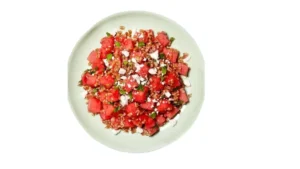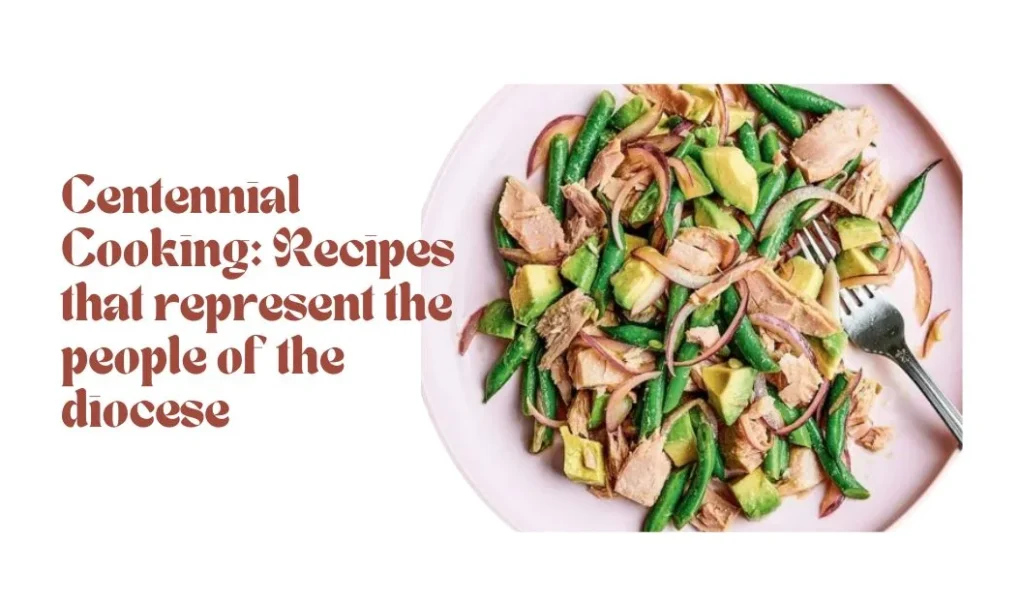Introduction
Centennial cooking captures the essence of a community’s culinary heritage over a century. For many diocesan communities, this tradition is not just about the recipes themselves but about celebrating the people who created and cherished them. This article delves into the rich tapestry of recipes that represent the people of various dioceses, with a focus on how these dishes reflect the history, culture, and evolution of the community.
The Legacy of Diocesan Cookbooks
Diocesan cookbooks often serve as a window into the culinary traditions of a community. These cookbooks, filled with cherished recipes, provide a snapshot of the foods that have been central to celebrations, gatherings, and daily life.
Historical Context
- Origins: Many diocesan cookbooks are created to commemorate significant milestones, such as anniversaries or centennials. They often include a blend of traditional recipes and modern adaptations.
- Purpose: These cookbooks aim to preserve and share the culinary heritage of the community, often highlighting recipes passed down through generations.
Notable Examples

Holy Family Catholic Church Cookbook
- Publication Date: 1998
- Content: Includes recipes with a strong presence of meat and processed ingredients, reflecting mid-to-late 20th-century culinary trends.
- Significance: Provides insight into the traditional recipes of Holy Family Catholic Church in Davenport, Iowa, where many members have strong historical ties.
“Sharing Our Best: Centennial Book of Recipes”
- Gifted By: User’s grandmother
- Publication Date: 1994
- Content: A collection of Czech and Texas-Czech foods reflecting the heritage of the KJZT community.
- Significance: Highlights the ethnic and cultural connections through recipes that have been cherished by the community.
Recipe Highlights from Community Cookbooks
Czech and Texas-Czech Recipes
Many community cookbooks, especially those from Czech organizations, feature traditional recipes that reflect the ethnic heritage of their contributors. Here’s a look at some key recipes and their significance:
| Recipe | Source | Description |
| Kolaches | Various Czech cookbooks | Sweet pastries filled with fruit or cheese. |
| Vanocka | Various Czech cookbooks | Traditional Czech Christmas bread. |
| Povitica (Croatian Nut Roll) | Rose Hood’s Recipe | A rich, nut-filled bread reflecting Croatian heritage. |
Traditional and Family-Favorite Recipes
Community cookbooks often include both traditional recipes and family favorites that have been adapted over time:
- Mexican-Style Casserole: A blend of flour tortillas, tomato sauce, peppers, refried beans, and cheddar cheese, reflecting adaptations of traditional recipes.
- Rhubarb Desserts: Recipes highlighting seasonal ingredients like rhubarb, which are common in many regional cookbooks.
The Role of Community in Recipe Preservation
Community cookbooks are more than just collections of recipes; they are a way to honor and preserve the contributions of local cooks.
Collecting Recipes
- Submissions: Recipes are often submitted by community members, reflecting both personal and family histories.
- Photos and Tributes: Including photos of the cooks and personal tributes adds a personal touch, preserving the stories behind the recipes.
Challenges and Opportunities
- Ingredient Availability: Recipes may feature ingredients that are no longer widely available, requiring adaptation.
- Recipe Variations: Variations in recipes highlight regional differences and personal touches.
Creating a Community Cookbook
For those interested in creating or contributing to a community cookbook, here are some key steps and tips:
Steps to Create a Community Cookbook
- Gather Recipes: Collect recipes from community members, ensuring a diverse representation of dishes.
- Document Stories: Include personal stories and photos to give context to the recipes.
- Edit and Compile: Organize and edit the recipes to ensure clarity and consistency.
- Publish: Decide on the format and method of publication, whether digital or print.
Tips for Contributors
- Focus on Tradition: Share recipes that are meaningful and reflect your family’s heritage.
- Provide Details: Include cooking tips, ingredient substitutions, and personal anecdotes.
- Submit Photos: High-resolution photos enhance the visual appeal of the cookbook.
FAQ
What is the purpose of a diocesan cookbook?
A diocesan cookbook aims to preserve and celebrate the culinary traditions of a community, often marking significant anniversaries or milestones.
How can I contribute to a community cookbook?
You can contribute by submitting your favorite recipes, along with personal stories and photos, to the cookbook organizers.
Are there any specific types of recipes typically included?
Community cookbooks often include a mix of traditional recipes, family favorites, and modern adaptations that reflect the community’s culinary heritage.
Conclusion
Centennial cooking is a celebration of culinary heritage, capturing the essence of a community’s history through its recipes. By exploring and preserving these recipes, we honor the traditions and contributions of those who came before us. Whether through community cookbooks or personal collections, these recipes provide a delicious link to the past and a way to celebrate our shared heritage.
If you’re interested in exploring more about community cookbooks or contributing to one, consider reaching out to local organizations or genealogical societies. Your recipes and stories could be a valuable addition to the rich tapestry of culinary history.

